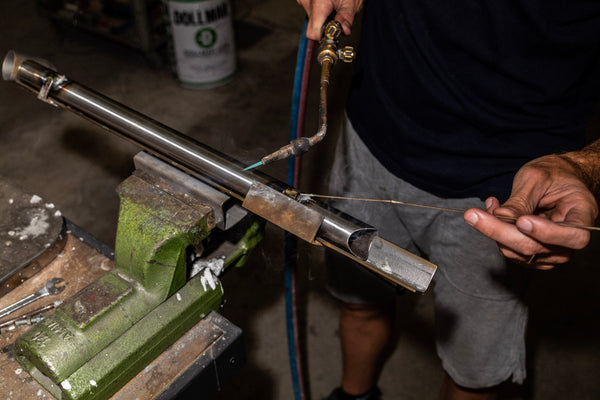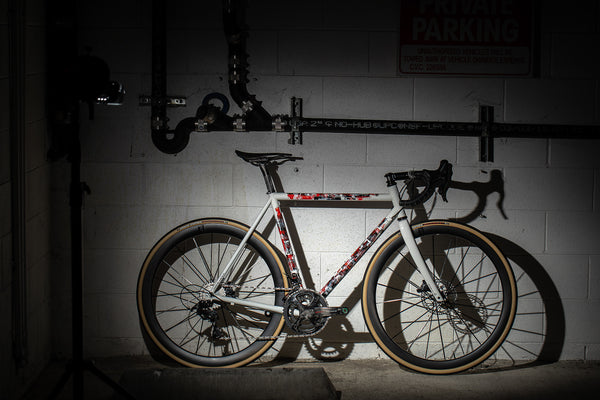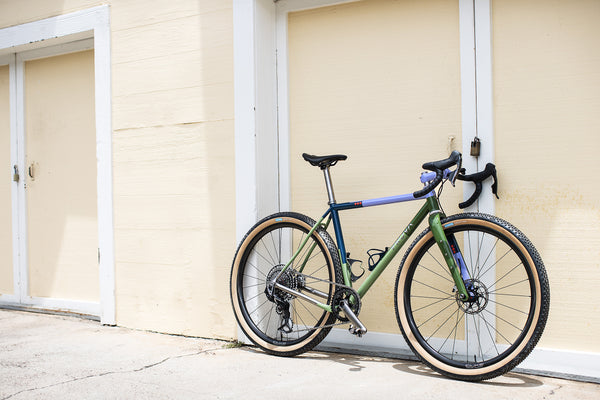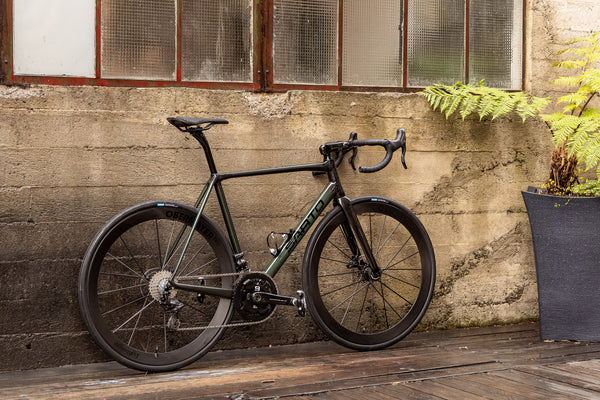If you’ve followed Yeti’s history for the last few years, you’d have noticed that they were probably one of the last, and the most reluctant to get into the 29er category. Yeti’s theory was that they simply had to make the bike feel and handle better than a 26er before they’d offer a 29er in the lineup. When Yeti developed their patented Switch Technology, they subsequently had engineered a platform suitable to build a frame with nice, short chainstays (resulting in that ’26’er feel) and excellent pedaling efficiency.
The original aluminum SB95 was an incredible bike, one that a few of us here at AC rode long before we decided to partner with them as a brand. The bike climbed well, handled incredibly, and with a dropper and a good set of tires, would allow you to ride pretty much anything you pointed it down. Even after many extremely positive reviews and ‘bike of the year’ awards, everyone knew the only thing that could make this better would be a carbon frame with a lighter overall weight.
Luckily, Yeti didn’t disappoint this year and released the SB95c – a high modulus carbon version with the same geometry and pedaling efficiency as the original model. We were one of the first shops in the country to receive the new bike, eager to ride it for ourselves and experience firsthand what a carbon version of the SB95 would warrant, if anything. As expected, it’s very similar to its aluminum predecessor, as the same solid pedaling platform is still there with the eccentric pivot making sure the entire shock stroke is nice and smooth. The main difference, however, is the liveliness of the new frame. Powering out of corners is much easier, and when you stand up to pedal the bike responds with a noticeable improvement in forward motion.
Yeti’s ingenious eccentric pivot point design switches direction halfway through the shock stroke to keep the compression consistent. Even at only 127mm of travel, the suspension feels endless.
While the carbon is obviously not done in-house, there are a lot of bits on this bike that are. Yeti’s engineers know the business of the CNC machine almost too well, and it’s blatantly obvious when looking at the details of the SB95c (or any Yeti for that matter).
This is my personal build, which I think highlights the versatility of this bike. While this isn’t the first bike I’ve run XX1 on, it won’t be the last, either. Even while pedaling full out on rocky, fast descents, I’ve yet to drop a chain or get a mis-shift, and I have yet to run out of gears on up or downhills. I’ve played with quite a few front chainrings thus far and have found the 34t to work great for our area. With SRAM offering so many different chainring size options, you’re bound of find something that works for you.
Yeti offers a 120mm Fox Float 34, a fork not currently configurable from Fox themselves. The fork offers just enough travel to save your ass in certain situations, with the larger stanchions keeping the whole front end nice and stiff, excelling in steep switchbacks despite having 29″ wheels. Flip the lever to ‘climb’ mode, and you have a solid platform to stand up and climb on. Perfect. That being said, I’m a bit eager to try the new RockShox Pike with their Dual Air setup. Peter at the shop just put this fork on his SB, and if the backside Tam KOM’s he’s destroyed in the last few days are any indication of what that fork is capable of, I’d wager to say it’ll be a worthy upgrade.
I’ve been running the ENVE wheels for a few years now, and they’ve become a staple on every mountain bike I’ve built since my first set. They’re actually not the lightest wheels you can buy, but in terms of being stiff, light, and fast, I’d say they’re the best all around package. Yeah, OK, they’re certainly not the cheapest around, but money spent on a bike is money well spent! In this photo I had a Nobby Nic up front and a Racing Ralph out back. This setup was great, and a good balance between traction and rolling resistance. I’ve since moved on to a Hans Damph up front with the Nobby Nic donning the rear wheel.
I’ve been using the Formula R1 Racing brakes on my bikes recently, and they’ve excelled on XC and done ok for the AM stuff. Their rotors are a bit lackluster, which is one upgrade I’ll be making soon with a switch to XTR rotors and a swap from a 160 to 180 out front.
A Truvativ bar, stem, Rock Shox Reverb post and a Fizik Tundra round out the cockpit. As this bike sat, it was a hair under 25LBS. Not bad for an extremely versatile All Mountain crusher. Switch a few components, namely a carbon post and light tires, and you have a XC race able bike. Conversely, with a set of bigger tires, larger rotors, and maybe 140mm of travel up front, I’d feel plenty comfortable racing Mega Avalanche on this thing.
We’ve done a numerous different configurations with the SB95c so far, testing different components, wheels, forks, saddles, and seatposts to better understand how they affect the ride. Interested in one? Give us a call and ask for Peter or Tony – we’d be happy to build you your dream SB95c.









Back to Journal